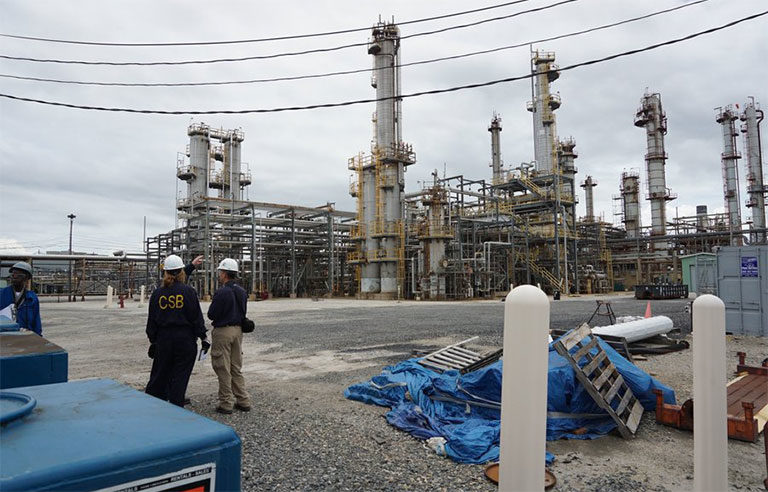Board applauds EPA’s efforts to promote hydrogen fluoride safety

Washington — The Chemical Safety Board says it “appreciates” a recent Environmental Protection Agency initiative that emphasizes compliance at chemical facilities that use the toxic substance hydrogen fluoride.
In August, EPA updated its National Enforcement and Compliance Initiatives for fiscal years 2024-2027. The agency prioritized a goal to focus on compliance efforts related to hydrogen fluoride within an overall action item on “reducing risks of accidental releases at industrial and chemical facilities.”
Also known as hydrofluoric acid, hydrogen fluoride may exist as a colorless gas or fuming liquid and can dissolve in water.
Hydrogen fluoride can cause serious injury or death at a concentration of 30 parts per million, CSB says. Exposure to the substance may trigger lung disease, skin damage and visual impairment, among other adverse health conditions, according to the Centers for Disease Control and Prevention.
CSB has investigated multiple incidents at facilities that use hydrogen fluoride, including those in Philadelphia; Superior, WI; and Torrance, CA. In February, CSB sent a letter to EPA calling on the agency to emphasize enforcement and compliance efforts at facilities using hydrogen fluoride.
“EPA can help ensure that facilities that use HF are operated safely,” CSB Chair Steve Owens said in an agency press release.
EPA says about 150 “catastrophic accidents” at chemical facilities occur annually. To the agency, a successful initiative to reduce risks of incidental releases would see facilities and industry associations collaborate to:
- Improve safety.
- Increase compliance with risk management plan and General Duty Clause requirements.
- Promote coordination and communication with state/local responders and communities.
The agency said in a separate press release that it would target companies “that choose not to comply with risk management requirements established to protect public health and safety from extremely hazardous chemical releases.”
Post a comment to this article
Safety+Health welcomes comments that promote respectful dialogue. Please stay on topic. Comments that contain personal attacks, profanity or abusive language – or those aggressively promoting products or services – will be removed. We reserve the right to determine which comments violate our comment policy. (Anonymous comments are welcome; merely skip the “name” field in the comment box. An email address is required but will not be included with your comment.)

